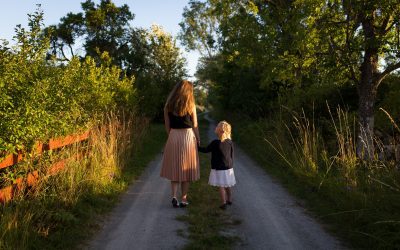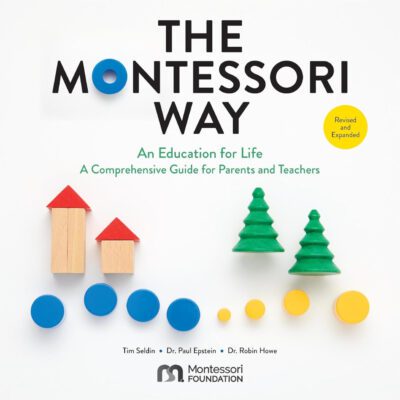Lisa Wagoner
The Montessori School of Winston-Salem, NC
In a previous issue of Tomorrow’s Child (Back to School/ 2002), I had written about our school’s decision to implement an All Day Montessori program at the 3-6 level this year. Our school year began in August, and in a few short months, we have already seen several positive outcomes.
Our class sizes are 22-24 children in the morning, and after lunch, about 15-17 children remain in the classroom. The main benefit of the new schedule and program is that there is little to no transition for most of the children who stay after noon. We offer Before and After School care for those families who need it; otherwise, our class time is from 8:30 a.m. until 3:00 p.m. (some children leave at noon).
The children enjoy lunch in their classroom, along with their teachers. Lunch was at best a hurried affair last year; now the meal has become an enjoyable experience. We use cloth tablecloths, relax, and enjoy each other’s company. Previously, we would have to have the majority of the children ready to go to their resting or napping location by 12:30 p.m. Lunchtime was geared towards being ready by that time, so it was not necessarily leisurely or relaxing.
Now, instead of leaving after lunch, the children help get their nap mats ready and prepare for 30 minutes of rest. The older children usually read at this time, while the younger children look at books, sketch, write or work with a quiet activity. We found a company that produced nap mats with sheet and pillow attached, and it is 100% machine washable. They look like mini sleeping bags and the children find them very cozy for resting. On average 2-5 children fall asleep during rest time. After thirty minutes, the children get up, put their things away and begin an afternoon work cycle.
Our building is very calm during the afternoons now. The four and five year-olds who remember going into another room to rest or nap are happy to stay in their classroom with their teacher and as a result, they have been quite productive. The children are happy to stay together and are eager for lessons, which has stimulated the five year-olds to pursue the larger academic works. The 5s now have an admiring audience when they complete the 45 Layout or a Language work with the moveable alphabet. In previous years, we would have the 5s alone in the classroom for the 1-2:50 p.m. time period, which wasn’t necessarily a realistic model for their educational life after
their time in our classroom—with the All Day program, they are now learning to organize their time, their academics and socializing.
Are there drawbacks to this program? Yes, at first, it was a tremendous amount of physical labor for the teachers. However, as the year progresses, the children do more of the work in getting their mats out, helping clean up, putting their things away, etc. The children are more interested in maintaining their classroom environment, and often offer to sweep, dust shelves and wash tables.
The children in the classroom have learned to be respectful of their sleeping classmates and I have seen children remind each other not to disturb their friends as they work nearby. We have witnessed some wonderful nurturing from the older children towards the younger and vice-versa—the classrooms are true communities. The parents also like having their children remain with their teachers all day, instead of just the mornings.
At first, some of the teachers had reservations about the five year-olds being distracted from their academic work. While this does occur from time to time, the children are also eager to work together. The 4s are eager to pursue some of the more academic works in the room, which in turn inspires the 5s to work with the more advanced Math and Language lessons.
So far, the response to the program has been good. Both families and staff have had positive experiences. Some of the classroom afternoon activities have included yoga, simple cooking projects and crafts, in addition to the works in the classroom. The beauty of the All Day program has been how the concept aids in the development of the whole child—not just the academic aspect. Our classrooms are communities with children learning so much from each other, from the environment, and from being together for the majority of the day. What a gift these children are receiving—the true benefits of a Montessori education!
(Please note: The final article in this series will focus on looking back over the school year—the highlights, what we learned from having this program, and whether any changes need to be made for the next school year).
Plans for 2003-2004
(Evolving into an All Day
Montessori Program)
By Lisa Wagoner
The Montessori School
of Winston-Salem, North Carolina
Plans are already in place for next year’s program at our school. In previous issues of Tomorrow’s Child, I have written about our program as we evolved into an All Day Montessori program. There were transitions to be made, as well as adjustments and changes, but we look forward to the coming school year.
The teachers and administrative staff reviewed the program we have in place and suggested improvements. The first change is the name—All Day will now be known as Children’s House. What an amazingly simple yet profound change and so true to the nature of the program! The children help care for each other, themselves and their classroom, in addition to working with the classroom materials. We experienced this previously, but we have definitely felt an enhancement, due to the lack of physical transitions for the children and the happiness they feel in staying in the same room for most of the day.
The other improvement was to have all three and four-year-old nappers go to a separate napping room to rest. There were several reasons for this decision. We discovered that the three year olds who stay after noon have had so much to assimilate—new classroom, new teachers, larger class size and higher expectations of independence. In addition, some children have been so excited by being with their friends that they don’t rest as fully as they should, which can lead to a difficult afternoon and evening for them. As a way to help them with their transition to a Primary classroom, and respecting their need for rest, we have decided to improve our program by having all nappers eat lunch and rest together in a large room available in our building (known as our multi-purpose room). Once the children wake up, they will have Montessori works available to them so that they can continue working on what they have learned in the mornings. As the children mature and no longer need a nap, they will rejoin their classmates and stay in the classroom after noon.
The children who remain in their classroom after noon will be the four-year-olds who no longer require a nap and the five and six- year-olds. They will still have a thirty-minute rest period, during which time they can rest their bodies by relaxing, reading, sketching or writing.
Change can be difficult but it can also be viewed as an exciting adventure. It has certainly been a year of growth and change for us as we implemented a new program to meet the needs of our families. Thank you for joining us on this journey—much has been learned and we look forward to improving and refining our program as the families’ and staffs’ needs evolve. The ultimate recipient of the positive results we have seen are the children in our school—our afternoons are calm, productive periods and the children have formed closer bonds with each other and felt a stronger sense of ownership of their environment. It is our hope that other schools look into this type of program as a beneficial way of furthering Maria Montessori’s vision—may the spirit of Casa de Bambini find its way into all of our programs and continue the type of education she pioneered.








